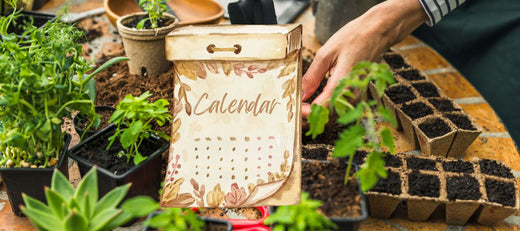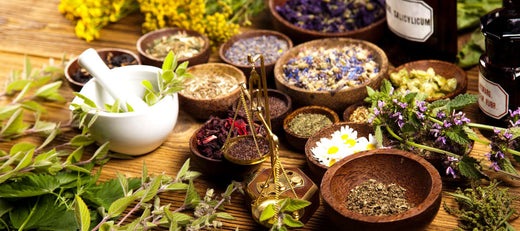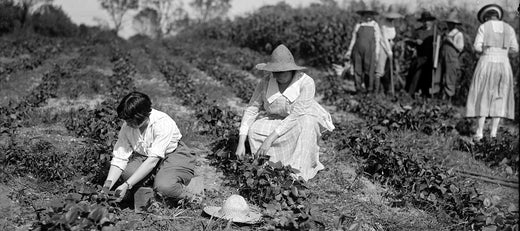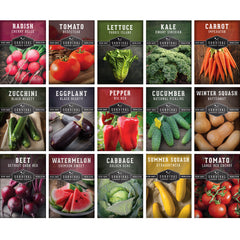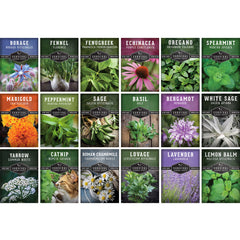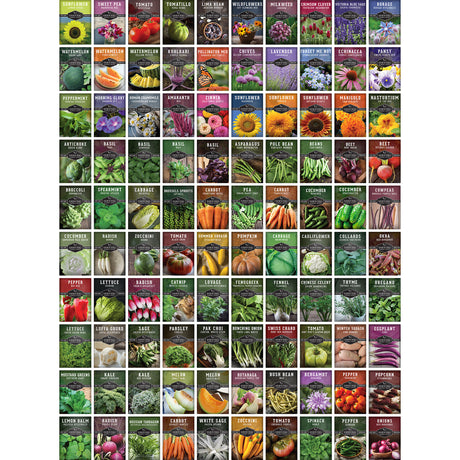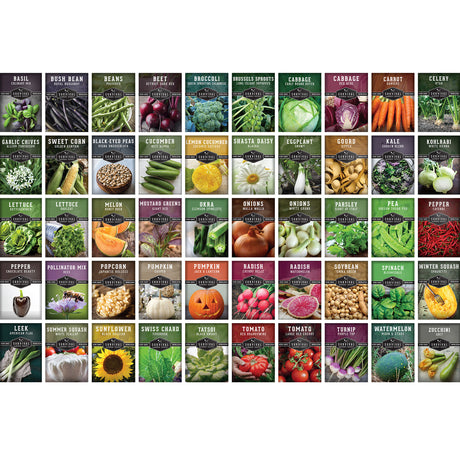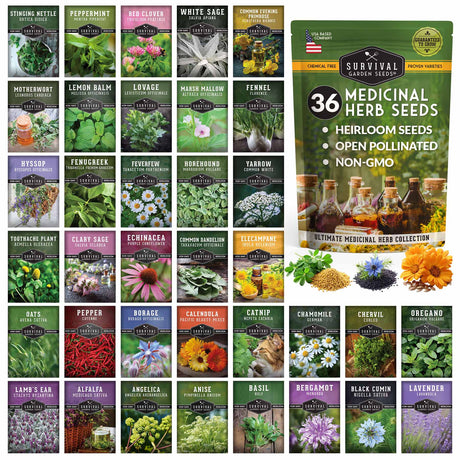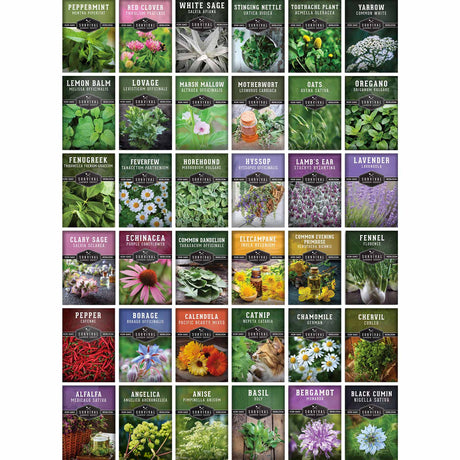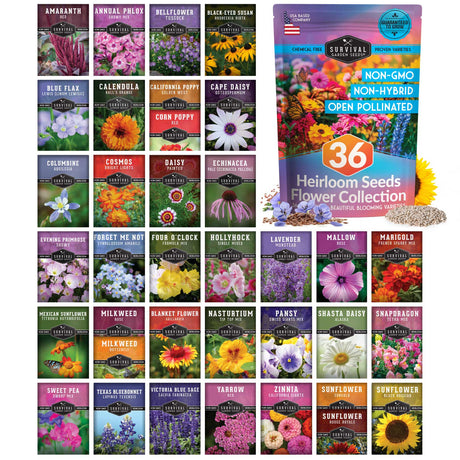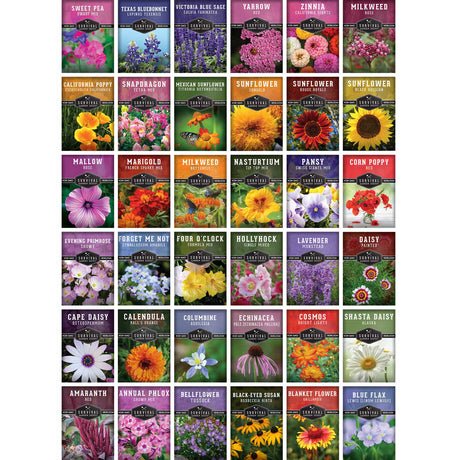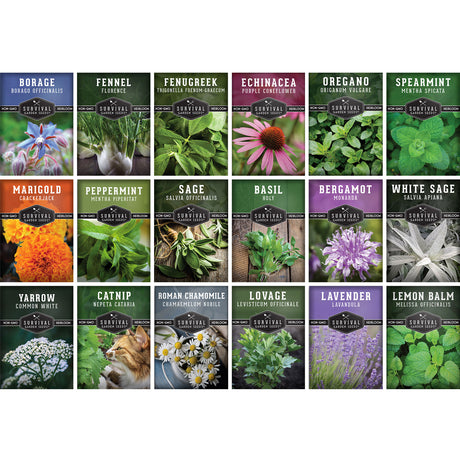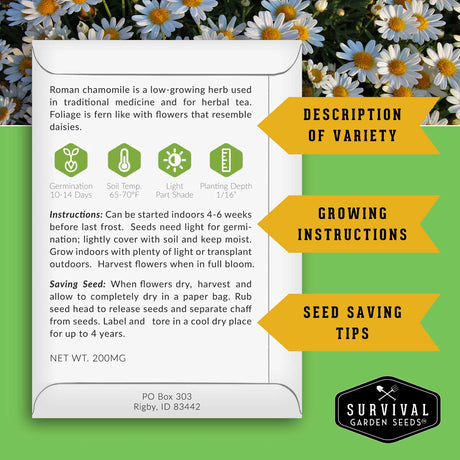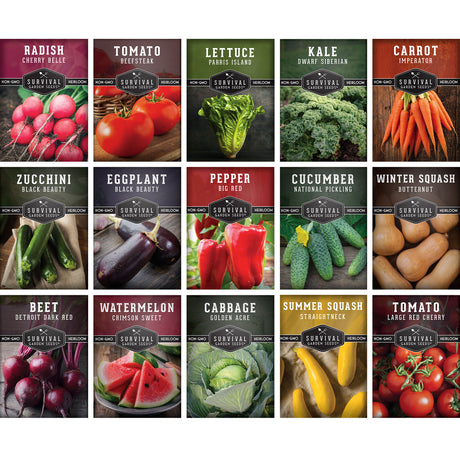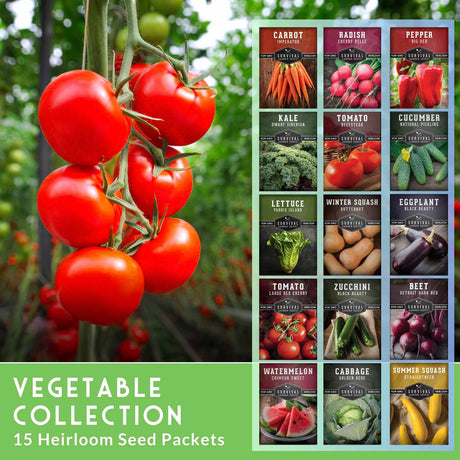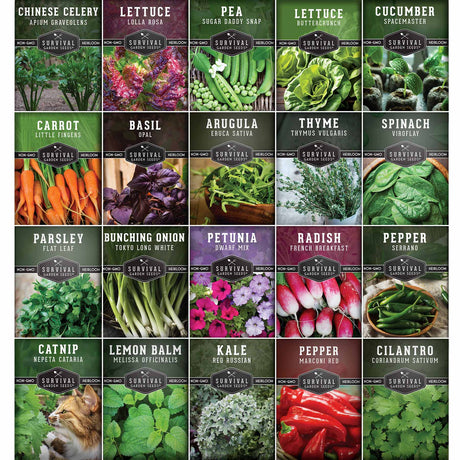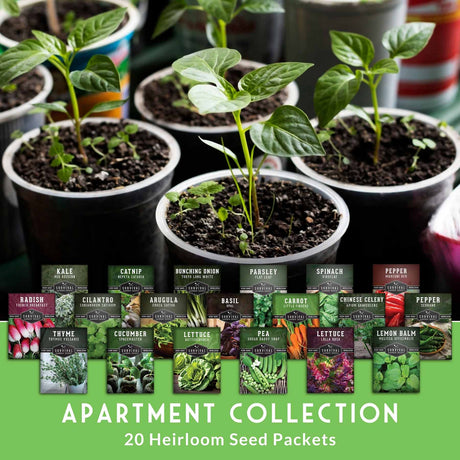Ask someone to picture a watermelon and they'll almost always picture a melon that's ruby-red inside with contrasting black seeds. Yet watermelons come in a much wider spectrum of colors: buttery yellows, sunset oranges, snowy whites, and unexpected two-tone swirls that look like a watercolor experiment. Growing these unusual watermelon colors at home is easier than most gardeners realize. By selecting the right varieties and learning specialized harvest cues, anyone can turn a summer plot into a living color wheel of flavor.
Why Grow Unique-Colored Watermelons?
Picking a watermelon color you haven't tried before isn't just for showing off on social media. Each color comes from different pigment molecules like beta-carotene in oranges, different kinds of lycopene in yellows, and flavonoids in whites. These bits actually change how the watermelon tastes and its nutrition profile. So, you get a variety of flavors, from super sweet like honey to a bit tangy and citrusy. These are tastes you just won't find in your everyday red watermelons.
People are willing to pay more for brightly colored slices at farm stands, and they often sell out fast. Chefs are always looking for ingredients that make their dishes pop. Even if you're just growing for fun, there's nothing like cutting open a watermelon and finding a gorgeous golden inside!
Different genetic backgrounds mean varying levels of disease tolerance, drought resilience, and maturity dates, cushioning a harvest against unpredictable weather. Unique colors can therefore act as built-in insurance while both looking great and selling well.
The Palette of Possibilities: Varieties by Flesh Color
Golden and Yellow-Fleshed Beauties
Yellow watermelons get their coloration from carotenoids; the absence of red lycopene results in a bright, sunshine interior. ‘Yellow Petite’ matures early making it a favorite for short growing seasons. ‘Golden Midget’ goes further: it pairs lemon-yellow flesh with a rind that turns gold at ripeness, eliminating guesswork while producing personal-size fruits perfect for small households.
Larger choices include ‘Yellow Crimson Sweet,’ a mutation of the classic red ‘Crimson Sweet watermelon,’ delivering familiar texture and classic seed patterning in a golden package. Its vines tolerate heat remarkably well, making it a staple in Southern gardens.
- Notable Traits: crisp texture, melon-flower aroma, lower acidity.
- Nutrient Edge: higher beta-carotene count per gram than carrots.
- Ideal Climate: 75–90 °F daytime temperatures, low nocturnal humidity.
Orange Watermelon Delights
Orange watermelons sit at the intersection of beta-carotene and xanthophyll pigments, providing an apricot shade often mistaken for cantaloupe at first glance. ‘Orangeglo’ watermelon stands out: 20-30 lb. oblong fruits burst with tropical sweetness and a hint of mango. The variety thrives in loamy soils where calcium levels are balanced, mitigating blossom-end rot.
A southern favorite with a devoted following, Orange Tendersweet thrives in warm climates where its deeply pigmented, exceptionally smooth flesh reaches peak flavor. Originally selected for sweetness and texture, it offers a rich melon experience without the common gritty afterbite. While its smooth, light-orange rind may seem unassuming, the interior delivers a burst of tropical color and flavor that’s often reserved for far rarer varieties. It's a hidden gem for backyard growers and farmers' market shoppers alike.
Snow-White and Creamy Wonders
White watermelons carry a recessive gene that suppresses red and yellow color entirely. ‘White Sugar Lump’ offers milky flesh so translucent it appears iced, accompanied by honeyed flavor reminiscent of pear. Its seeds germinate well in slightly cooler soil than red types, giving Northern growers an advantage.
‘Cream of Saskatchewan’ traces back to immigrant communities that valued early ripening above size. These fruits rarely exceed 8 pounds but deliver overwhelmingly crisp bites. The rind is papery-thin, so careful handling during harvest prevents bruising.
White watermelons might not be as packed with antioxidants as their red or yellow cousins since they lack those pigments. But, they're less acidic, which is great if you have a sensitive stomach or need a gentle snack for a little one!
Two-Tone and Tie-Dye Marvels
If true novelty is the goal, bi-colored varieties blur conventional boundaries. ‘Desert King’ showcases chartreuse walls fading into coral cores, while ‘Tye-Dye’—the result of open-pollinated breeding—delivers unpredictable patches: sometimes orange swirls through yellow, sometimes red veins across a pale canvas.
These melons demand strict pollination control to maintain the tie-dye pattern. Growers often hand-pollinate early morning flowers, bagging them afterward to prevent bee interference. While labor-intensive, the payoff is a farmer’s market show-stopper commanding double the price of standard reds.
Visual intrigue aside, two-tone varieties are conversation starters that encourage culinary creativity: mix them with cucumber for color-layered salads or cube them for fruit platters that look airbrushed.
Core Techniques for Cultivating Non-Traditional Watermelons
Selecting and Sourcing Viable Seed

To ensure the seeds produce plants with true colors, start with pure seeds. Buy them from trusted sellers who say their seeds are grown at least 1/2 a mile away from other watermelon fields. Look for seeds that sprout at least 90% of the time, as colored varieties can be weaker if not stored well because their pigments can spoil.
Don't buy generic seed packets from stores; these often have mixed seeds that can produce unexpected colors in the next generation. Instead, look for "open-pollinated" heirloom seeds that have consistently produced the same colors for at least three generations—good seed catalogs will share this information.
Soil Preparation and Fertility Adjustments
Color intensity often correlates with soil nutrient balance. Aim for slightly acidic soil, pH 6.3–6.8, enriched with decomposed compost at planting time. Too much nitrogen will make the vines grow a lot but won't help the color of the fruit. A good fertilizer with a 1-1-2 ratio of nitrogen, phosphorus, and potassium (N-P-K) will help the fruit develop and get its color.
The hardness of the watermelon flesh is affected by calcium and boron. Test your soil. If calcium levels are below 600 ppm, add gypsum. If you need boron, spray a 0.1% solubor solution on the leaves when the plant flowers; this won't be harmful.
Planting Timelines and Temperature Targets

Make sure the soil temperature is 70°F at 2 inches deep before planting seeds directly. Colder soil slows down sprouting and can lead to weak plants that are prone to rot. If you live in a cooler area, start seeds indoors in 3–4 inch peat pots three weeks before the last frost. Then, plant them outside when the second true leaf appears.
How far apart you plant your watermelons affects their color. For smaller melons, space them 3 feet apart in a row with 6 feet between rows. Large orange varieties like 'Orangeglo' need 4 feet between plants in a row to reduce stress, which can dull their color.
Pollination Management for Pure Colors
Cross-pollination can mix up genetic lines, leading to off-color flesh in later generations. Use one of these three methods:
- Isolation Distance: Plant each color type at least 0.5 miles apart.
- Temporal Isolation: Stagger plantings by 28 days so flowering times don't overlap.
- Hand Pollination: Cover unopened female buds the evening before they open, manually add pollen at sunrise, and re-cover for 48 hours.
Anyone saving seeds to sell should carefully record pollination dates and parent details, then do a cut-test on random fruit to check for consistent color before selling them.
Advanced Care to Intensify Flesh Color
Water Management Strategies
Consistent moisture helps sugar and color develop. Drip irrigation of about 1 inch per week is good for most mild climates. Once the fruit is the size of a tennis ball, cut watering in half to make them sweeter and more colorful. However, don't let the vines wilt often, as stress can fade the color of yellow and orange varieties.
Using straw as mulch keeps the soil temperature steady and prevents sunlight from bleaching the colors near the rind, which is important for vibrant fruit.
Nutrient Tweaks for Pigment Development

Potassium helps make fruits sweet and colorful. Adding sulfate-of-potash when fruits start to form will make yellows and oranges brighter. Spraying leaves with magnesium helps the plant make food, which then goes to the fruit.
For orange and red fruits, spraying them with seaweed extract helps them ripen faster and get an even color. Do this in the late afternoon for the best results.
Disease and Pest Control without Chemical Stain
Pesticides can make the watermelon rind look dull and even change the color of the inside of some white varieties. To avoid using strong insecticides, you can use methods like covering plants with row covers, changing where you plant crops each season, and releasing beneficial insects to control pests like cucumber beetles.
Powdery mildew often appears in the middle of the growing season, turning leaves pale and reducing how much sunlight the plant can use. Choose varieties that are resistant to it if possible. Otherwise, spraying plants every two weeks with potassium bicarbonate will control the fungus and is safe for food and won't affect the color.
Identifying Ripeness in Non-Red Watermelons
Even with different colors, you can still tell if a watermelon is ready by looking for a yellow spot on the ground and listening for a hollow sound when you tap it. But a better way is to check the curly tendril closest to the fruit; it should turn completely brown when the melon is sweetest. For yellow and orange watermelons, the spot where they rest on the ground will turn light brown instead of creamy white.
People who pick watermelons for a living look at the skin: it should look dull, not shiny. Some types, like ‘Golden Midget,’ change color from green to gold when they're ripe. If you cut it too early, the fruit won't have much flavor. If you cut it too late, it will be mushy. Write down how long it takes each season to get the timing just right.
Post-Harvest Handling, Storage, and Culinary Applications
Storage Life Expectancy by Color Class
White and yellow watermelons usually have thinner cell walls, which means they only last about 10–12 days when stored at 45 degrees Fahrenheit and 90 percent humidity. Orange and "tie-dye" types have firmer flesh and can last 14–18 days under the same conditions. Quickly cooling them within three hours of harvest helps keep their color vibrant.
Don't store them near fruits that produce ethylene, like apples; ethylene makes the watermelons soften faster and lose their color.
Flavor Pairings and Recipe Ideas
Chefs embrace color contrast on the plate. Suggestions:
- Yellow Melon Ceviche: Cube ‘Yellow Petite,’ toss with lime, cilantro, and diced jalapeño for a sweet-heat appetizer.
- Orange Sorbet: Purée ‘Orangeglo’ flesh, add a dash of ginger, churn in an ice-cream maker for a sunset-colored dessert.
- White Melon Gazpacho: Blend ‘Cream of Saskatchewan’ with cucumber, mint, and Greek yogurt for an elegant chilled soup.
For beverages, combine tie-dye juice with sparkling water and basil leaves, showcasing layers of color in transparent glasses—a perfect farmers’ market sampling tactic.
Seed Saving and Amateur Breeding for Custom Hues
To get seeds, the fruit needs to be very ripe. Scoop out the seeds and rinse them. Then, put them in a jar of water for 36 hours. This helps remove stuff that stops them from growing. After that, dry them on parchment paper for seven days until they are very dry.
To create new colors, plant different colored parent plants in separate areas. Hand-pollinate the plants you want to cross. Keep track of their characteristics for at least four generations to make sure the new color is stable. Also, record weather and soil information because the environment can change how colors appear. Make sure the new color is consistent over several seasons before giving it a name.
Common Questions Answered
- Will colored watermelons cross with pumpkins? No. Watermelons are Citrullus lanatus, while pumpkins belong to Cucurbita. Cross-species pollination is biologically impossible.
- Can pigments change during cooking? Heat may slightly pale yellow or orange flesh, but flavor intensifies. Quick searing cubes on a grill caramelizes sugars without significant color loss.
- Are colored varieties genetically modified? The cultivars discussed arise from traditional breeding and natural mutations, not transgenic manipulation.
- How many plants are needed to guarantee pollination? At least five vines flowering simultaneously assure sufficient male blossoms, though skilled hand-pollination can succeed with just one vine.
- What causes a red seed cavity in a yellow melon? A minor cross-pollination event or genetic instability can introduce red anthocyanins around seeds. The flesh remains safe to eat.
Final Thoughts
Growing unusual watermelons adds beauty, income, and new food options. By picking the right seeds, caring for the soil, and knowing when to pick them, growers can enjoy unique flavors and colors. Whether you're eating a yellow watermelon or selling a colorful one, these fruits change how we think about watermelons, making them an exciting discovery.


